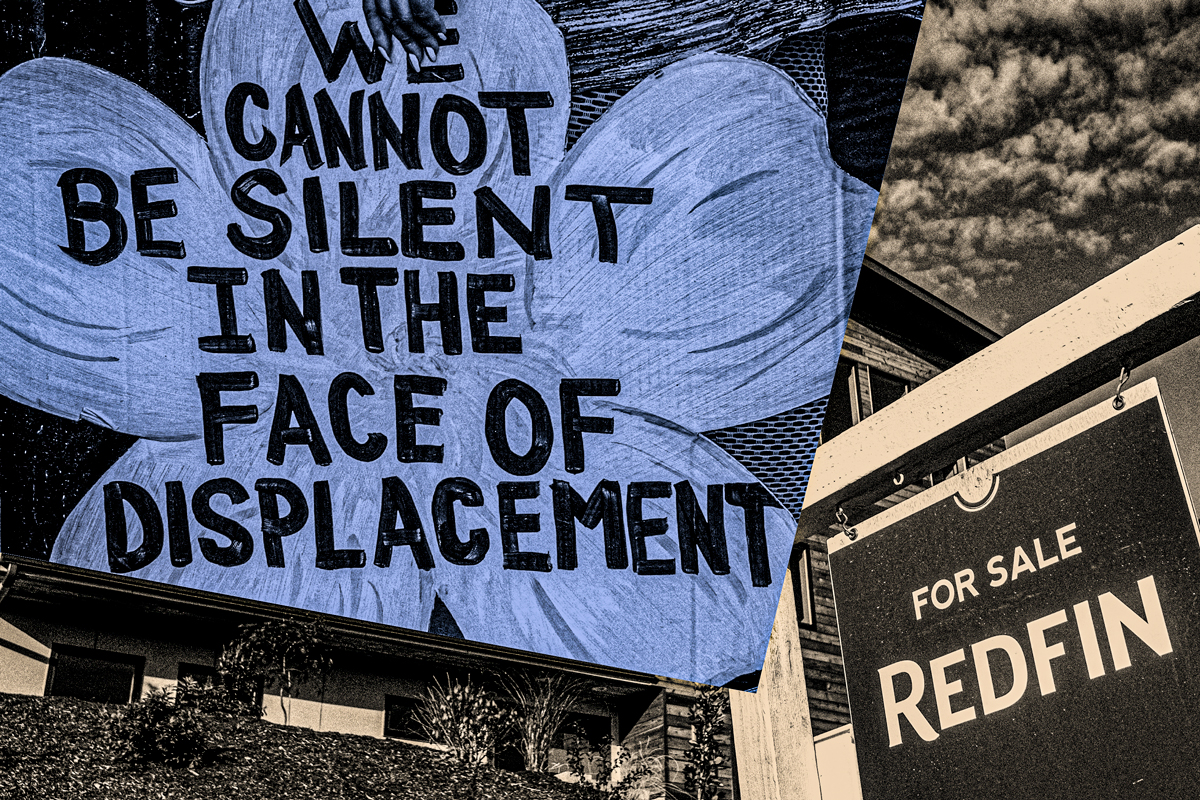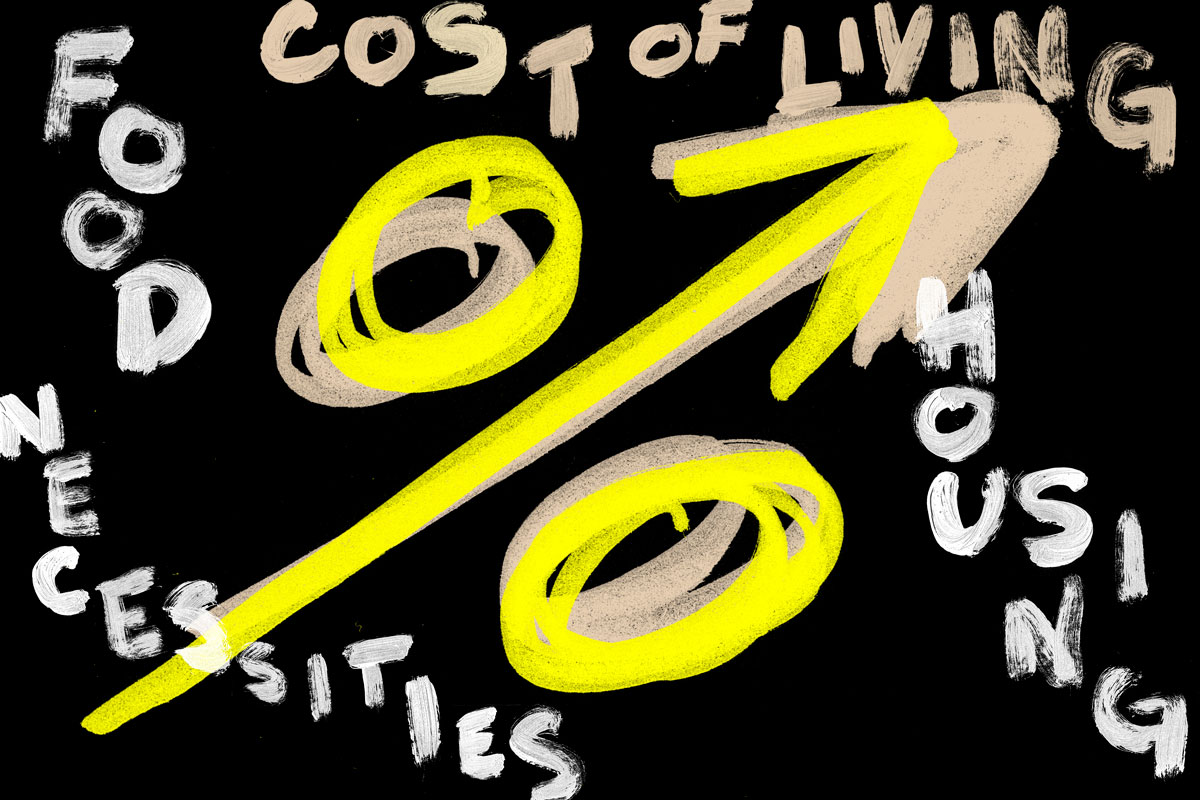As inflation continues to roil the U.S. economy, many political analysts are wondering when Americans can expect to see relief. It’s true that some components of the July Consumer Price Index (CPI), the primary measure of inflation, indicated price moderation for some items—like gas—the same cannot be said for other crucial consumer goods such as housing. Even as the Federal Reserve has continued raising interest rates in its war on inflation, home prices and rental costs remain hyperinflated.
The reasons for this are complicated—largely because the housing market itself is complicated. Housing serves several functions within the U.S. economy. At its core, housing is shelter—a place that people call home while seeking refuge from the outside world. It is also, for many people, an investment—a means by which individuals can accrue wealth and, with it, financial security. And increasingly, it also has burgeoned into a major speculative market, allowing private firms to diversify their investment portfolios while hedging against other losses, as they exploit demand for an essential commodity.
Indeed, many scholars have long underscored that the commodification of housing necessarily means that profits, rather than people, will dictate the terms of the market. In other words, the core function of the housing market—to shelter individuals—has taken a back seat to its other purpose, which is to make money. It should come as no surprise, then, that real estate has become big business in many metropolitan areas, to the detriment of working people.
Behind this shift is the broader dynamic that dictates how real estate fits within the broader capitalist economy. Its speculative attractions for investors explain the outsized role it’s come to play within both the U.S. and the global economy over the past half-century—the age of neoliberal capitalism.
The commodification of housing necessarily means that profits, rather than people, will dictate the terms of the market.
The postwar boom years of the twentieth century—known as “the golden age of capitalism,” witnessed a broad surge in prosperity, thanks mostly to an extraordinarily productive and profitable manufacturing sector. The same boom cycle produced the mass expansion of the American middle class—and the wealth of that class was anchored in mass homeownership.
However, this golden age didn’t reach all Americans. Black Americans and women were for the most part excluded from the prosperous new American middle class—inequalities that would worsen under the coming pressures of a global downturn.
Once the postwar boom started to lose momentum, a new, and grimmer economic landscape emerged. By the early 1970s, the American economy was no longer growing at the same breathtaking pace. And by the mid-1970s, it was clear that the slowdown had hampered both productivity and profitability throughout the economy. The decline in profits, combined with rampaging inflation, produced the new era of stagflation—a double whammy of stagnant economic activity and high inflation. With manufacturing no longer a reliable source of profits investors sought new outlets for their capital to realize better returns. Enter real estate.
Over the past four decades, real estate has become highly lucrative, taking off especially during the Clinton and George W. Bush presidencies. Both presidents made the expansion of homeownership the centerpiece of their domestic agendas (mainly to expand real estate markets). And via their shared commitment to deregulation of the financial sector, they unleashed a new wave of real-estate speculation. The infamous upshot of the financialization of real estate was the subprime mortgage crisis of 2007-2008 and the global recession that it helped to touch off.
The Obama White House passed a new series of regulatory reforms to curb the worst excesses of the subprime years—yet the broader infrastructure of financialized real estate remained intact, and indeed expanded. We see this dynamic now in many urban markets, where first-time homebuyers or expanding families are no longer the chief buyers—instead these consumers are increasingly crowded out by private equity firms in search of profits.
According to recent data produced by the realty firm Redfin, real estate investors bought a record share of homes for sale in 2021. Though “investors” can mean anything from giant private equity firms like Blackstone to smaller, more local real estate investment trusts (REITs), each speculative investor enters the housing market with the same basic agenda. They have shifted assets into real estate because they recognize that real estate remains a safe harbor investment, proving both profitable and comparatively stable over the longer term. So they have mobilized into urban housing markets on a large scale, realizing profits either by flipping properties or charging exorbitant rents where the competition for rental properties is fierce.
In fast-growing metropolitan areas such as Atlanta, Charlotte, and Phoenix, many of these investors are real estate private equity (REPE) firms. Such firms basically load up on cash—either via private investors or, as has been the case for much of the twenty-first, century as direct beneficiaries of “quantitative easing.” They are then positioned to strategically gobble up properties in lucrative markets that can promise a relatively quick returns on investment. Add in the fact that private equity firms’ tax burden is miniscule—the result of successful past and present lobbying—and it’s easy to see why they have zeroed in on real estate as their financial playground.
Because the basic idea of markets is to get commodities in the hands of the highest bidder, and since capitalism produces inequalities as a matter of course, the success of REPEs necessarily comes at others’ expense. Unsurprisingly, those others tend to be the folks who are the least competitive within the housing market—typically working-class people, a disproportionate number of whom are people of color. (This all assumes they can enter the housing market at all, as the barriers to entry for homeownership in many metro areas have become more pronounced in recent years.)
The housing squeeze has been especially devastating for people of color, given that they are more likely to reside in urban areas where real estate is more profitable for investors.
For anyone seeking to achieve social justice and structural racial equality, the growth of REPEs represents a first-order threat. Since firms like Blackstone have large sums of cash on hand, they often snatch up the most desirable properties in local markets—and always zero in on communities and neighborhoods where they can realize the quickest and largest profits.
In Atlanta, where investors bought 25 percent of homes in 2021, the southern and western areas of the city—overwhelmingly Black—were especially appealing, primarily due to the relatively low price of the housing stock there. REPEs moved in swiftly, and outbid other prospective buyers, dictating the broader expansion of the market in the process. Their outsize role in setting the terms of market participation means that the actions of REPEs render housing increasingly unaffordable at the very moment that most renters and first-time buyers are struggling with explosive inflation in the housing market.
Atlanta is no outlier. Across the country, the market that treats housing as an investment vehicle rather than an essential good that all of us need to survive has harmed working people across the board. It has been especially devastating for people of color, given that they are more likely to reside in urban areas where real estate is more profitable for investors. No matter the locale, investors’ gains are working Americans’ losses.
As poor and working-class Americans continue to suffer the brunt of inflation, we should understand the clear fallout from the Fed’s ongoing commitment to interest rate hikes: a punishing boost in housing prices, designed to benefit investors at the expense of workers. And as the Fed continues to tighten the money supply, making borrowing more costly, housing construction is likely to slow. This means that an already tight market for real-estate and rental housing will tighten still further. As all these trends continue, the market players best positioned to pay inflated housing prices, like REPEs, will likely absorb a greater share of the housing stock.
In places like New York City, progressive leaders are starting to demand serious regulatory restraints on these speculative interests as the city’s ongoing housing crisis continues to escalate. Average rents in Manhattan have eclipsed $4,000—the highest ever—while homelessness remains acute. Meanwhile, major private equity firms like Blackstone are hoping that the Fed’s apparent strategy of inducing a worker-punishing recession will also redound to their interests. Should the spiraling real estate market produce a mass wave of foreclosures and, from there, private equity investors will again be sitting pretty, and acquire an even larger share of an already cost-prohibitive housing market at bargain prices. To permit this status quo to continue is a luxury that the nation’s cities, working populations, and communities of color can no longer afford.
Jared Clemons received his Ph.D. in political science from Duke University, where he studied race and political economy. He is a postdoctoral research fellow at Princeton University’s Center for the Study of Democratic Politics.



